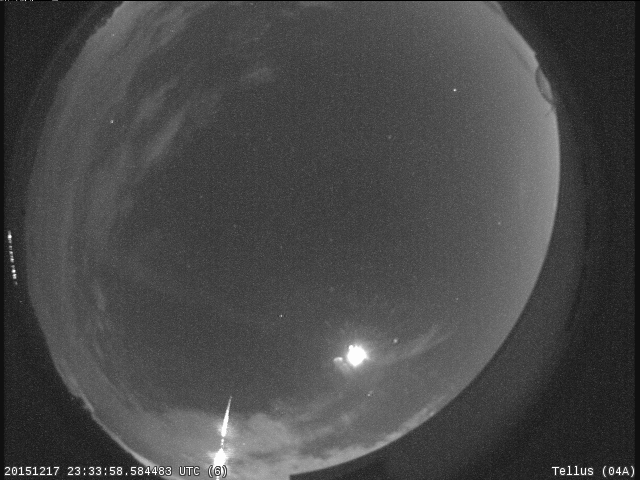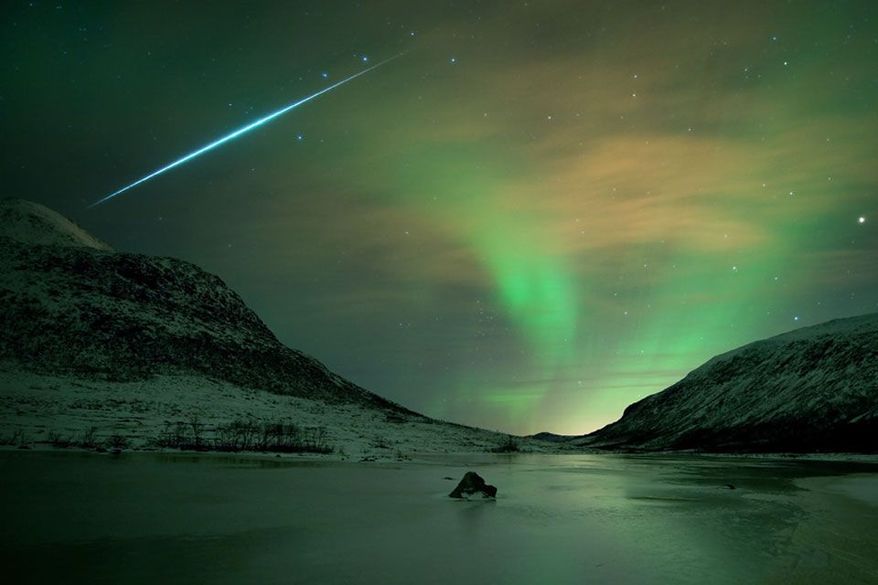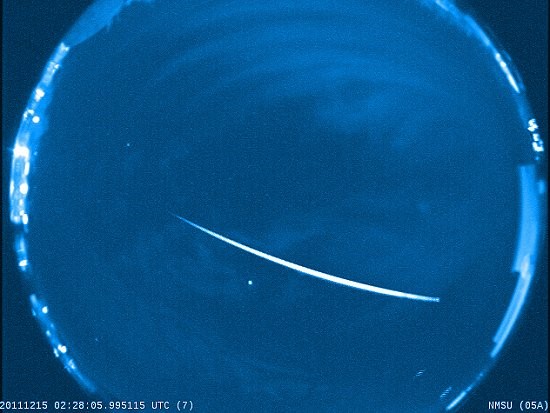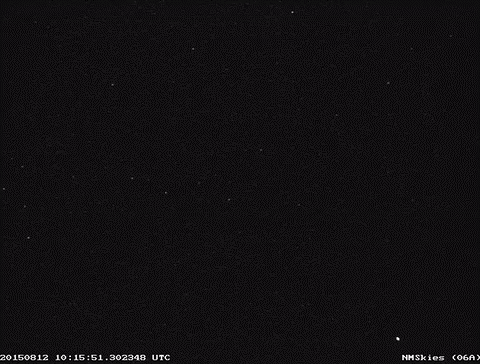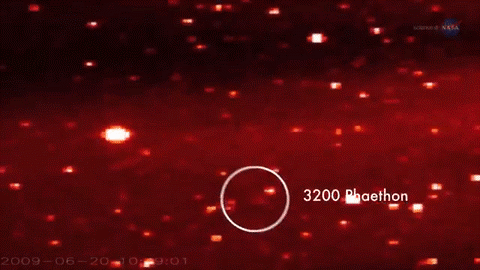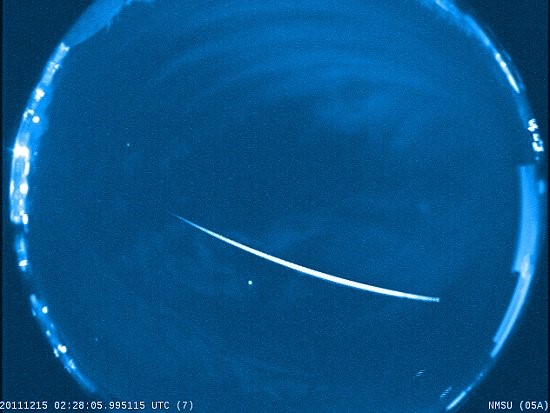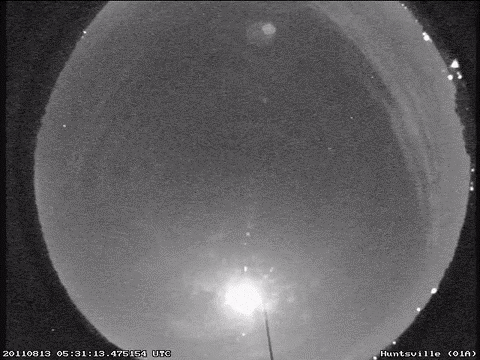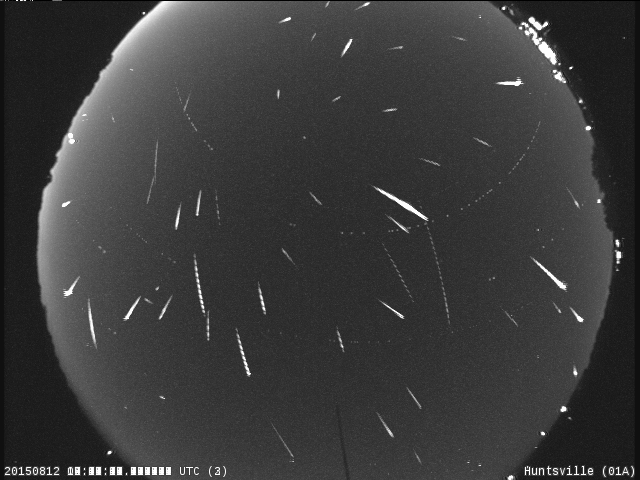https://www.youtube.com/watch?v=http://youtu.be/wGE7OQSCkyA[/embedyt]
We have received numerous reports concerning a bright fireball that occurred over Georgia at 5:33:55 PM CST (6:33:55 PM EST). All 6 NASA all sky meteor cameras in the Southeast picked up the meteor at an altitude of 50 miles above the town of Georgia (SE of Atlanta). From its brightness, it is estimated that this piece of an asteroid weighed at least 150 pounds and was over 16 inches in diameter. It entered the atmosphere at a steep angle and moved almost due south at a speed of 29,000 miles per hour. The NASA cameras tracked it to an altitude of 17 miles above the town of Locust Grove, where it had slowed to a speed of 9000 miles per hour, at which point the meteor ceased producing light by burning up. It is possible that fragments of this object survived to reach the ground as meteorites.
A more detailed analysis will be performed tomorrow and further details will follow if this analysis still indicates the possibility of a meteorite fall.
Ground track, still images from the cameras, and a movie from the NASA camera located in Cartersville, Georgia attached.

